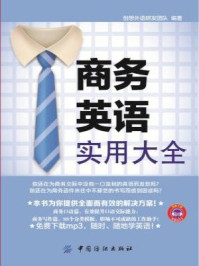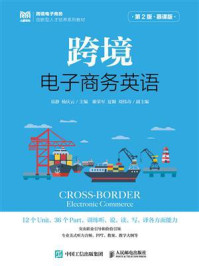





According to Schermerhorn,strategy defines the direction in which an organization intends to move and establishes the framework for action through which it intends to get there.It involves a consistent appro ach over time and reflects the organization’s appro ach to achieving its obj ectives.The purpose of strategy is to maintain a position of advantage by capitalizing
 on an organization’s strengths and minimising its weaknesses.To do this,an organization must identify and analyse the threats and opportunities present in its external and internal environments.Thus,organizations need to develop strategies to deal with these external influences if they are to avo id a reactive,short-term appro ach to management.Similarly,internal influences such as the quality of an organization’s human resources,its degree of management expertise and its structure and culture can each be a source of strength or weakness.Strengths in HRM,for example,will enable an organization to better attract,retain and motivate quality employees.Consequently,HRM strategies need to be developed as an integral part of an organization’s overall strategy.
on an organization’s strengths and minimising its weaknesses.To do this,an organization must identify and analyse the threats and opportunities present in its external and internal environments.Thus,organizations need to develop strategies to deal with these external influences if they are to avo id a reactive,short-term appro ach to management.Similarly,internal influences such as the quality of an organization’s human resources,its degree of management expertise and its structure and culture can each be a source of strength or weakness.Strengths in HRM,for example,will enable an organization to better attract,retain and motivate quality employees.Consequently,HRM strategies need to be developed as an integral part of an organization’s overall strategy.
Thompson and Strickland define strategic management as the pro cess whereby managers establish an organization’s long-term direction,set specific performance obj ectives,develop strategies to achieve these obj ectives in the light of all the relevant internal and external circumstances and undertake to execute the chosen action plans.The aims of strategic management are to help the organization to achieve a competitive advantage—the special edge that permits an organization to manage environmental influences better than its competitors do—and to ensure long-term success for the organization.Strategic management do es this by giving managers consistent guidelines for action and by allowing the anticipation of problems and opportunities.
Although numerous appro aches to classifying strategies have been developed,the key ones highlighted are as follows.
 Growth
Growth
An organization can expand either through internally generated growth or through acquisitions,mergers or j o int ventures.Growth may be concentrated on building existing strengths or on moving into new or unrelated areas of business.
 Retrenchment
Retrenchment

The emphasis of retrenchment is on performance improvement by increasing productivity,cost-cutting,downsizing,re-engineering and selling or shutting down business operations.Retrenchment strategies are common in today’s cutthroat
 environment.
environment.
 Stability
Stability
This is a neutral strategy that attempts to maintain the status quo
 by pursuing established business obj ectives.A stability strategy is often used when an organization is performing well in a low-risk environment or when an organization needs to consolidate after a period of rapid growth or restructuring.
by pursuing established business obj ectives.A stability strategy is often used when an organization is performing well in a low-risk environment or when an organization needs to consolidate after a period of rapid growth or restructuring.
 A combination of growth,retrenchment and stability
A combination of growth,retrenchment and stability
An organization can pursue more than one strategy at the same time.A large organization,for example,may be expanding in some business or geographical areas and retrenching in others.
Ever-increasing pressures have forced managers to critically rethink their appro aches to HR management.People and their current and potential contributions were often over-looked in the past.According to Drucker,in the knowledge economy,employees are not labour,they are capital.Knowledge workers are the maj or wealth creators.It is now the productivity of capital(not its cost)that is decisive in determining organizational performance.Merging business and HRM strategies is thus a critical source of competitiveness for organizations.Managers consequently must adopt a strategic mindset or way of looking at and thinking about the management of people.HR managers,in turn,have a responsibility to ensure that HRM is strategically aligned with the organization’s overall business obj ectives.
Strategic HRM obj ectives accurately reflect the strategic obj ectives and values of the organization.Schuler,Galante and J ackson show that organizations can improve their environment for success by making cho ices about HR planning,staffing appraisal,remuneration,training and development,and labour relations that are consistent with and support the corporate strategy.Other recent research similarly demonstrates that the closer the fit between an organization’s business strategy and its HRM strategy,the more positive the effect on HRM effectiveness and labour productivity.This means that HR obj ectives,policies and plans must be integrated with the organization’s strategic business obj ectives. Furthermore,other research shows that information on employee perceptions and reactions to HR policies and practices is necessary to an improvement in HRM’s contribution to organizational effectiveness.
Without such a strategic view, HRM will remain a set of independent activities,lacking in central purpose and coherent structure.It will be reactive rather than pro active in shaping a relationship between the organization and its employees.It will fail to optimize opportunities for the organization’s survival and growth.HRM must shed its non-strategic bureaucratic baggage or fade away unmourned.In a fast-changing,globally competitive world,it is human resources that provide the competitive edge.
Human resource planning is described as employment planning.This places HR planning at the operational level where it is concerned with detailed forecasts of employee supply and employee demand.Based on the HR forecasts,specific action can be taken to get the right numbers and types of people do ing the right work at the right time(that is,planning the flow of people into,through and out of the organization).In contrast,strategic HRM planning is concerned with defining philosophy,obj ectives and strategy,and precedes HR planning.HR planning must be an integrated part of the organization’s overall strategic planning pro cess.
The HR manager needs to be able toforecast the organization’s future HR requirements and determine from where they will be obtained.Three sets of forecasts are required:
■ a forecast of the demand for human resources within the organization
■ a forecast of the supply of human resources available within the organization
■ a forecast of the supply of external human resources
These forecasts are an attempt to predict changes in the organization’s needs for human resources.They will be influenced by the organization’s strategic business obj ectives,the demand for its products and services,proj ected labour turnover,the quality and type of employees required and available,technological changes,financial resources and the general state of the economy.Although sophisticated techniques have been developed,HR forecasting is not an exact science and organizations continue to use elementary forecasting techniques such as the opinions of line managers and labour turnover statistics.Two appro aches to HR forecasting planning can be identified—quantitative and qualitative.

■ The quantitative approach
Quantitative HR forecasting uses statistical and mathematical techniques.It is primarily used by theoreticians and professional HR planners in large organizations. The quantitative appro ach sees employees as numerical entities and groups them according to age,sex,experience,skills,qualifications,job level,pay,performance rating or some other means of classification.The fo cus is on forecasting HR shortages,surpluses and career blo ckages;its aim is to reconcile the supply and demand for human resources given the organization’s strategic obj ectives.
Quantitative forecasting includes trend proj ection,econometric modelling and multiple predictive techniques.Such techniques often require specialised know-how,so the HR manager may have to rely on staff experts or outside consultants.These kinds of appro aches include: Econometric modelling and multiple predictive techniques ; Trend projection .
■ The qualitative approach
Qualitative HR forecasting uses expert opinion (usually a line manager)to predict the future(for example,the marketing manager will be asked to estimate the future personnel requirements for the marketing department).The fo cus is on evaluations of employee performance and promotability
 as well as management and career development.Estimates based on expert opinion,although not as sophisticated as the quantitative appro ach,are popular because they are simple,cheap
and fast.
The Delphi technique and the nominal
as well as management and career development.Estimates based on expert opinion,although not as sophisticated as the quantitative appro ach,are popular because they are simple,cheap
and fast.
The Delphi technique and the nominal
 group
;
technique
are the common methods of this kind.
group
;
technique
are the common methods of this kind.
Techniques for forecasting the internal supply of personnel include skill inventory
 ,replacement charts,succession planning,turnover analysis and Markov analysis.
,replacement charts,succession planning,turnover analysis and Markov analysis.
■ Qualitative methods
 Skills inventory
Skills inventory
The skills inventory is another method used to evaluate the internal supply of labour.It consolidates basic information on all employees within the organization.Skills inventories can be quite simple and kept manually,or they may be detailed and maintained as part of an integrated HR information management system (HRIMS).
 Replacement charts
Replacement charts
The replacement chart is less sophisticated than computerised skills inventories and is primarily used with technical,professional and managerial employees.Skills inventories are the source of data used in replacement charts.Typically,this information includes name,age,present position,performance rating,experience and an indication of promotion potential.
 Succession planning
Succession planning
Succession planning is concerned with the filling of key professional and management vacancies.It stresses the development of high-potential employees and takes a long-term view of the organization’s HR needs.As such,it is a key driver for management commitment to HR development and performance management.It makes use of replacement charts,but generally expands on these to include additional information on current performance,promotability,developmental needs and long-term growth potential.
■ Quantitative methods
 Turnover analysis
Turnover analysis
To accurately forecast the demand for labour,the HR manager must know how many people will leave the organization.Labour turnover in an organization may result from employee retirement,death,illness or disability,resignation,retrenchment or termination.
 Markov analysis
Markov analysis
Markov analysis is a mathematical technique used toforecast the availability of internal job candidates.A matrix is developed to show the probability of an employee moving from one job to another or leaving the organization.
It is unrealistic to assume that every future vacancy can be filled from within an organization.This is particularly true for disciplines where there is a global market for talent and the competition is fierce.Consequently,the organization must tap into the external labour market(lo cal,regional,interstate or international).The HR manager thus needs to be alert to various trends,such as the ageing population,the casualization of workforce,outsourcing,foreigner’s work permit,etc.
Exercise1 : Fillin the antonyms according to the text .

Exercise2 : Answerthe following questions according to the text .
1.Why is HRM strategy necessary?
2.What are the appro aches to HR planning?


